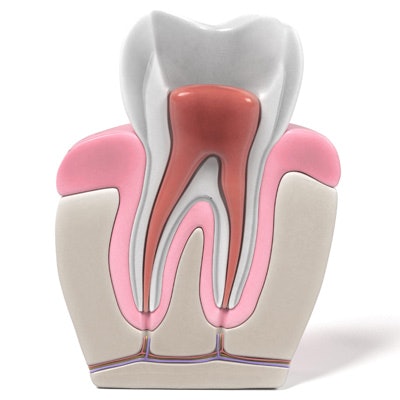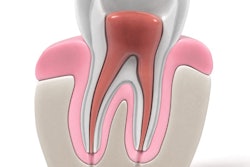
Core-carrier obturation may be a viable alternative to conventional root canal obturation techniques. A new systematic review found that the core-carrier method had the same success rate as the traditional cold lateral condensation technique.
Researchers from China studied the results of more than a dozen clinical trials that evaluated the success rate, postoperative pain, and incidences of overfilling with the core-carrier method. They then compared the core-carrier technique with cold lateral condensation and warm vertical compaction. Their findings were published in BMC Oral Health (December 29, 2017).
"The core-carrier obturation could be a reasonable alternative to conventional technique without compromising the outcome," wrote the authors, led by Amy Wai-Yee Wong from the University of Hong Kong dental school.
New techniques stand up to the test
Cold lateral condensation has been the most frequently used obturation technique for more than a century; however, as dental technology has advanced, so has the desire for obturation techniques that better adhere to root canal walls. One such technique is core-carrier obturation, which uses heated gutta percha to adapt to canals. In fact, core-carrier obturation was the second most frequently used obturation method among general dentists in 2014, according to the review authors.
Despite its increasing prominence, no previous systematic reviews have evaluated this method. The researchers, therefore, searched scientific databases for clinical trials that studied the method's clinical success rate, effect on short-term postoperative pain, and incidences of overfilling. They included nearly 20 studies in their final review.
“ The core-carrier obturation could be a reasonable alternative to conventional technique.”
Root canal treatments using the core-carrier obturation technique were successful 83% of the time, the reviewers found. This was similar to both the cold lateral condensation and warm vertical compaction techniques. The core-carrier technique was also similar to cold lateral condensation for short-term postoperative pain, which occurred in about a quarter of patients.
However, root canals were also more likely to be overfilled using the core-carrier technique compared with cold lateral condensation. Overfilling is associated with patient pain and the sealer pooling in the apical portion of the canal, the authors wrote.
"The risk of overfilling could be reduced by using a small amount of sealer and obturating the canal with the master cone that correlated with the last file size," they noted.
General dentists prefer core-carrier
Of the 19 studies included in the review, only six directly evaluated the success rate of core-carrier obturation compared with cold lateral condensation. Thus, the statistical power and sample size of the analysis are limited, the authors noted.
Despite these shortcomings, general dentists reported that they prefer the core-carrier method, which has similar treatment outcomes and takes significantly less chairside time than cold lateral condensation. The authors also concluded that it could be a viable alternative to traditional obturation techniques.
"The use of thermoplasticized obturation could be an alternative to the traditional cold lateral condensation," the authors wrote. "It was easy and quick to master the skills of the core-carrier obturation technique. However, overfilling could be a concern."



















